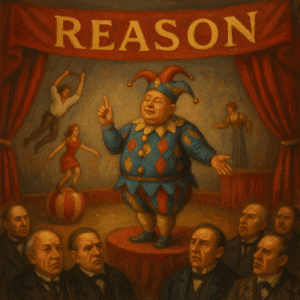From Feminism to Gynocentrism: A Strategic Deception

Abstract
This article argues that feminism, contrary to its public image as a movement for gender equality, was from the outset a strategic vehicle for advancing female interests. Rather than evolving toward egalitarianism, feminism has served as a prelude to gynocentrism. This ideological framework prioritizes women’s needs, moral authority, and institutional power over male representation and well-being. Drawing from historical analysis, institutional critique, and contemporary examples, the article highlights how feminist rhetoric has gradually justified systemic asymmetry. A striking recent example includes the reported initiative by Bangladesh’s former Prime Minister, Sheikh Hasina, to legally mandate the use of the title “Sir” when addressing female superiors, symbolizing a shift from gender parity to state-sanctioned female dominance. The article argues that such developments are not isolated or anomalous but represent the logical outcome of feminism’s underlying strategic posture, which has now matured into full-fledged gynocentrism.
Introduction
Feminism has long presented itself as a movement for gender equality, championing women’s rights in voting, education, and workplace inclusion. Yet evidence suggests that feminism emerged and developed with an underlying logic aimed at centering female experiences and rights, often at the expense of male needs. This article traces the ideological shift from early feminism to gynocentrism, showing how feminist rhetoric and institutions gradually codified female moral privilege and sidelined male concerns.
Historical Framing and Selective Narratives
First-wave feminism emphasized suffrage and legal emancipation for women while often ignoring systemic burdens placed on men, such as compulsory military service, workplace fatalities, and lack of parental rights. Feminist advocacy at the time framed women as morally superior and in need of protection, while male obligations were seen as natural duties rather than as social injustices. This asymmetrical concern for female advancement laid the cultural groundwork for an ideology that elevated female suffering while marginalizing male disadvantage (Wright, 2020).
Feminist Moral Asymmetry
Feminist discourse consistently positions women as inherently vulnerable and deserving of protection. Gynocentric feminism explicitly valorizes feminine traits—maternal nurturing, cooperation, emotional fluidity—while recasting masculinity as dominant or harmful (Encyclopedia entry, 2005). Such framing fosters a moral hierarchy that places women above men in moral worth and social weighting.
Institutional Bias and Male Marginalization
Family courts, domestic‑violence legislation, and social welfare systems frequently favour women—even in cases where men are victims or caregivers. These institutional biases are manifestations of gynocentric norms embedded in bureaucracies and laws (Wright, 2020). Programs intended to support women proliferated, while recognition of male suicide, educational underachievement, and child custody rights remained minimal or suppressed.
Philosophical Underpinnings and Feminist Theory
Academic feminism often reifies a fundamental difference between genders grounded in essentialist metaphors. Gynocentric critics such as Adrienne Rich and Susan Griffin argue for the primacy of feminine values over masculinist neutrality (Showalter, as noted in the Encyclopedia entry). Meanwhile scholar Christina Hoff Sommers critiques the trajectory toward “radical feminist” tendencies and the alarming effects on male-centric institutions (Sommers, 1994/2000).
Feminism as Precursor to Gynocentrism
Rather than evolving toward gender parity, feminist movements shifted from titles and access toward cultural dominance. Feminism weaponized empathy and protective norms to entrench gynocentric superiority. The rhetoric of equality gave way to demands for equal outcomes and institutional prioritization of women’s experiences above all. This ideological shift reflects not a transformation but an intentional progression—from egalitarian pretensions to gynocentric reality.
Critique of Feminist Claims of Good Faith
Some critics label much of modern feminism as “pseudo‑feminism,” co‑opting equality rhetoric to further female self‑interest (Khader, 2024). Others argue that feminism’s academic branches exploit moral authority while dismissing dissent, demonstrating ideological intolerance rather than dispassionate inquiry (Sommers, as above). These critiques converge on the conclusion that feminism often fails to address male disadvantage in meaningful ways.
Conclusion
The evidence reviewed supports the thesis that feminism should not be seen as a betrayed egalitarian ideal but as a strategic precursor to gynocentrism. Feminism, from its early stages, engineered a privilege structure favoring women’s voices, needs, and moral standing. This article calls for a truly egalitarian approach—one that recognizes and redresses harms to all genders impartially. While feminism has long claimed equality as its goal, its consistent evolution toward female prioritization reveals a different telos, in Aristotelian terms. The end state toward which feminism naturally moves is not parity, but the institutionalization of female moral authority, social dominance, and protected status. In other words, feminism’s final cause is gynocentrism. Any system that persistently frames one group as victim and the other as oppressor, without reciprocal moral scrutiny, will naturally evolve into a structure of domination, no matter its initial rhetoric.
References
Encyclopedia of Religion. (2005). Gynocentrism. In Encyclopedias, almanacs, transcripts and maps. Encyclopedia.com.
Khader, S. (2024). Faux Feminism: Why We Fall for White Feminism and How We Can Stop. Beacon Press.
Sommers, C. H. (1994/2000). Who Stole Feminism?; The War Against Boys. American Enterprise Institute.
Wright, P. (2020). Gynocentrism as a narcissistic pathology. New Male Studies: An International Journal, 9(1), 24‑49.








